 A tech demonstration at the Jet Propulsion Laboratory leads to a rethink of the upcoming Mars Environmental Survey mission (MESUR). A self-contained “rover” named Rocky IV convinces mission planners to include a similar rover on an upcoming Mars mission; although the rest of MESUR is eventually scrapped due to budget cuts, the one portion of it to be salvaged is the Mars Pathfinder lander, which will deliver the rover (later to be named Sojourner in a nationwide contest) to the Martian surface sometime in the late ’90s.
A tech demonstration at the Jet Propulsion Laboratory leads to a rethink of the upcoming Mars Environmental Survey mission (MESUR). A self-contained “rover” named Rocky IV convinces mission planners to include a similar rover on an upcoming Mars mission; although the rest of MESUR is eventually scrapped due to budget cuts, the one portion of it to be salvaged is the Mars Pathfinder lander, which will deliver the rover (later to be named Sojourner in a nationwide contest) to the Martian surface sometime in the late ’90s.

 NASA/JPL’s low-cost
NASA/JPL’s low-cost 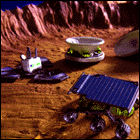 American toy company Mattel releases a
American toy company Mattel releases a 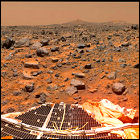 Using a never-before-attempted system of landing, the Mars Pathfinder unmanned probe employs an aerobraking maneuver to slow down in the planet’s atmosphere, and an all-encompassing layer of airbags to “bounce” onto the surface without using rockets to slow the vehicle down. The weighted landing station rolls to the correct orientation, deflates the airbags, and deploys on schedule, proving the merits of a landing technique that will deliver future Mars landers already in the planning stages.
Using a never-before-attempted system of landing, the Mars Pathfinder unmanned probe employs an aerobraking maneuver to slow down in the planet’s atmosphere, and an all-encompassing layer of airbags to “bounce” onto the surface without using rockets to slow the vehicle down. The weighted landing station rolls to the correct orientation, deflates the airbags, and deploys on schedule, proving the merits of a landing technique that will deliver future Mars landers already in the planning stages. 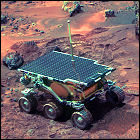 Sojourner, the original Mars rover, rides out on the Martian surface, getting close-up looks at nearby rocks and demonstrating technologies that are vital to upcoming Mars missions, including automatic hazard detection and avoidance. Sojourner’s ability to “see” obstacles and navigate around them without advice from ground controllers will be essential to later Mars rovers, since it takes seven minutes for a signal to reach Earth, and seven more minutes for instructions to return. The rover captures the public imagination and is even immortalized as a Hot Wheels toy.
Sojourner, the original Mars rover, rides out on the Martian surface, getting close-up looks at nearby rocks and demonstrating technologies that are vital to upcoming Mars missions, including automatic hazard detection and avoidance. Sojourner’s ability to “see” obstacles and navigate around them without advice from ground controllers will be essential to later Mars rovers, since it takes seven minutes for a signal to reach Earth, and seven more minutes for instructions to return. The rover captures the public imagination and is even immortalized as a Hot Wheels toy.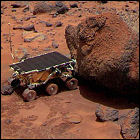 Its ability to recharge its power supply depleted, the
Its ability to recharge its power supply depleted, the 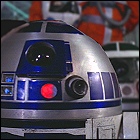
 Berkley Books publishes the non-fiction book
Berkley Books publishes the non-fiction book